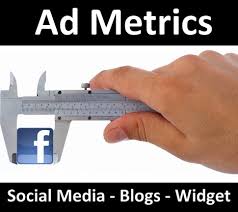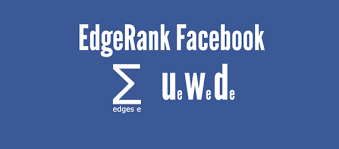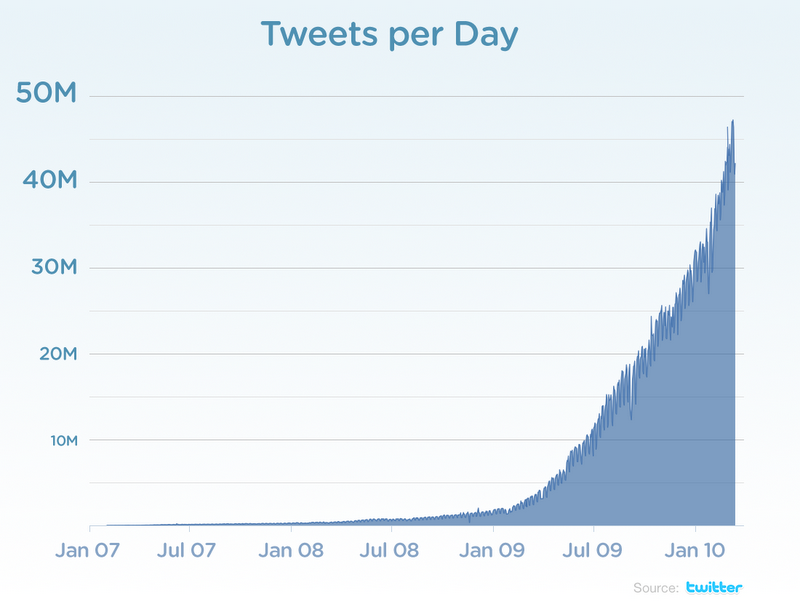 The Internet is now *Social*. It is now organizing around people and connectedness. The implications are grand, the value proposition nebulous, the future uncertain for Legacy Media, Brands and audience channel incumbents. This article offers businesses and Brands investing in building their customer base on the Social Web a lens through which to interpret value and operate effectively in the new frontier.
The Internet is now *Social*. It is now organizing around people and connectedness. The implications are grand, the value proposition nebulous, the future uncertain for Legacy Media, Brands and audience channel incumbents. This article offers businesses and Brands investing in building their customer base on the Social Web a lens through which to interpret value and operate effectively in the new frontier.The second Internet is about people and connectedness and it matters to brands
Let me get straight to the point: my thesis on the Second Internet is nothing new; I didn’t invent it, I’m not sure who did, but I need to articulate it one more time: the first internet was about websites and the second internet is about people and connectedness. This connectedness will change the way that we think about brands, the purpose and the procedure of how we spend advertising and marketing money, and the quantity and quality of data we use to make those decisions. First, a bit about connections.
Human connections are now enabled through websites which so fundamentally change the way that we behave that they deserve to be identified as a kind of new media. You know what I’m talking about: Facebook, Twitter, YouTube, LinkedIn and the dozens of other companies disrupting the first Internet and other businesses across multiple categories. Moreover, these connections create a massive amount of data never before known in human history. The second Internet disrupts what were assumed to be laws of humanity like Dunbar’s number and has fundamentally changed the ways that people maintain relationships, organize themselves, overthrow dictatorships, and, although it seems a small disruption in comparison, make purchasing decisions. The connectedness of the second web is not just connectedness with other people, it’s the connectedness of people with ideas, people with movements, and just as easily, with brands. That last point should give you an idea of where I’m going with this.
Below I will share my observations on investment trends in Social Advertising on the Social Web and describe the implications of the shifting paradigm as a result of the second Internet and its organization around people. I often use Second Internet and Social Web interchangeably because as Mr. Zuckerberg is often quoted saying “We're building toward a web where the default is social.” If I had to guess, I’d say that he’s probably going to win the jargon battle here.
new media requires new metrics
Over the last 10 months I have talked to hundreds of Industry Stakeholders, including Brands, creative agencies, media agencies, PR agencies and SMB’s investing in Social Advertising and a presence on Social Web communication mediums like Facebook, Twitter, LinkedIn and YouTube. The goal of my hundreds of conversations was simple: using Steve Blank’s principles of customer development, I wanted to uncover the needs of customers spending money in the Social Advertising industry. Later on I went to build the products that address those needs and develop a predictive model for investors looking to participate into the Advertising opportunity on the Social Web.
Several recurring themes came to light during my conversations. First, Brand advertisers and their various agencies were obsessed on sets of core metrics to quantitatively describe success in the nascent Social Advertising industry, and rightly so. These metrics include Video Views, Fans, Followers, Leads, Sales and Engagements, not to mention an explosion of secondary and dubious metrics like cost per creation of an avatar or cost per user generated video submission of a friend playing a prank on a friend. Second, there was no consensus on which metrics were relevant or how they were to be measured. Third, Brands were hesitant to shift more than 3-5% of ad spend to Social Advertising and this was primarily a result of having no core metric from which they could base their results like the analogous GRP in Television advertising. With the explosion of social data, there had to be someway, in that mess of numbers to accurately answer the question “How are we doing?” Like management guru Peter Drucker said, “If you can’t measure it, you can’t manage it.”
 For social advertisers the first theme is a godsend. We’ve got data, our clients want data. Shit, we know how to put the square peg in the square hole. Now the later two themes are problems, but they are not problems without solutions. Turns out we’ve got a lot of square pegs, and maybe they’re color-coded, but they all fit, but they’re not all equally good. It is my hypothesis that the deeper integration of social with traditional agencies and the emergence of social-centric agencies will drive more consistent Social Advertising practices, consistent metrics, consistent measurement techniques, transparency, and ultimately trustworthy and higher ROI. Once this level is achieved, we will see a massive shift to Social Advertising spending in 2011 and beyond, likely more aggressive than predictions of even the most bullish Social Media Analysts.
For social advertisers the first theme is a godsend. We’ve got data, our clients want data. Shit, we know how to put the square peg in the square hole. Now the later two themes are problems, but they are not problems without solutions. Turns out we’ve got a lot of square pegs, and maybe they’re color-coded, but they all fit, but they’re not all equally good. It is my hypothesis that the deeper integration of social with traditional agencies and the emergence of social-centric agencies will drive more consistent Social Advertising practices, consistent metrics, consistent measurement techniques, transparency, and ultimately trustworthy and higher ROI. Once this level is achieved, we will see a massive shift to Social Advertising spending in 2011 and beyond, likely more aggressive than predictions of even the most bullish Social Media Analysts.Now the people meeting with me understood the Social Web, or at least, understood that they wanted to understand the Social Web. But for all the other people out there not meeting with me there’s one big hurdle: social media, marketing and advertising doesn’t mean spending money on media, it means spending money on being a media company.
from paying to paying to be
The tides have changed for Brand building. We are no longer in the world of leasing our customers on channels controlled by the Legacy Media, and pitching to them during and only during those brief moments. The connectedness of people on the Social Web has enabled Brands to leapfrog audience channel incumbents and create audiences of people interested in sharing similar experiences with Brands. You are no long paying a media company, you are paying to be one.
Television, radio, billboards and other Legacy Media made massive investments in infrastructure which they pay off using a lease-and-pitch model. If a Brand wants to tell consumers about its great new color of jeans, it must lease the advertising space and will be given one opportunity to pitch its new colored jeans to the audience and hope they convert some leased audience members into customers. Lease and pitch is a great way to make money as a media company. Unfortunately, it’s not a great way to connect with people and until recently, the only alternative was becoming a Legacy Media company yourself. Most companies making jeans don’t have the appetite to build radio towers, launch satellites, or run transoceanic cables. The second Internet is where this model begins to fail and where Brands will become media companies.
 When a Facebook user clicks the like button and becomes a fan of a Brand, the Brand can publish messages into that user’s newsfeed on Facebook in perpetuity, or as long as the user remains a fan, both of which are a whole lot longer than the 30 seconds you get on TV. The same logic applies to Twitter followers and YouTube subscribers. When a user likes or follows or subscribes to a Brand on the Social Web, they are providing the Brand access to the most valuable audience channel, and leaving it up to the Brand to open up the lines of communication as little or much as a Brand manager sees fit. The reason I claim that this is the most valuable audience channel is because of data; if a brand starts to think of itself as a media company, then I can offer you concrete metrics to guide your brand boldly and profitably into a social media mini-empire.
When a Facebook user clicks the like button and becomes a fan of a Brand, the Brand can publish messages into that user’s newsfeed on Facebook in perpetuity, or as long as the user remains a fan, both of which are a whole lot longer than the 30 seconds you get on TV. The same logic applies to Twitter followers and YouTube subscribers. When a user likes or follows or subscribes to a Brand on the Social Web, they are providing the Brand access to the most valuable audience channel, and leaving it up to the Brand to open up the lines of communication as little or much as a Brand manager sees fit. The reason I claim that this is the most valuable audience channel is because of data; if a brand starts to think of itself as a media company, then I can offer you concrete metrics to guide your brand boldly and profitably into a social media mini-empire.The brands pivoting their advertising spend onto the Social Web do so for one of two reasons. Some of them are impulsive and want to join the bandwagon, but more often, they’ve found the metrics that answer confidently the question “How are we doing?” The primary metrics for calculating return on audience channel infrastructure investment are earned media value generated through paid advertising, the compounding earned media value generated through various owned audience channels, the cost avoidance associated with not having to exclusively lease and pitch audiences -- delivering messages for free to already connected consumers to influence purchasing behaviors -- and with direct sales.
There are the three main practices to building Brands on the Social web, and they’re pretty much the same principles as you’d employ in throwing a great kegger. First is Social Advertising to buy the resources to construct their owned audience channels. These are the ads and the like buttons, or bright green flyers all around campus that promise an amazing night with friends. Second is Social Marketing to maximize the value created through owned audience channels. These are the promotions and strategies that get people to engage positively with your brand. In the kegger analogy, this would probably be beer and a live band that everyone on campus likes. Finally there is Social Media (or social content as some call it) to publish into the new communication mediums enabled by the 2nd Internet to create value for their owned audiences. This is something related to your brand that people want to share with their friends because it is of interest or creates value or is meaningful in some way. In the kegger analogy, these are probably polaroids you don’t want to remember, or an invite to the next party.
That’s all for the theory, now it’s time for something useful.
now what do I do?
- Focus on NewsFeed Optimization:
 Facebook has an algorithm call EdgeRank that surfaces the most relevant content to the top of the NewsFeed. The exact details of the EdgeRank algorithm are known by few, but the two major drivers of relevance between Brands and Fans on Facebook are the number of Fans a brand has relative to other brands in its category and the post quality score of the Brand’s Social Media published through their audience channel. On Facebook, post quality score is a 7 day rolling average of likes, comments, and shares of content distributed by a brand on Facebook. It’s important that brands maintain leadership in their category in terms of Fan number and post quality in order to effectively use the newsfeed as an audience channel to create EMV, cost avoidance and to drive sales.
Facebook has an algorithm call EdgeRank that surfaces the most relevant content to the top of the NewsFeed. The exact details of the EdgeRank algorithm are known by few, but the two major drivers of relevance between Brands and Fans on Facebook are the number of Fans a brand has relative to other brands in its category and the post quality score of the Brand’s Social Media published through their audience channel. On Facebook, post quality score is a 7 day rolling average of likes, comments, and shares of content distributed by a brand on Facebook. It’s important that brands maintain leadership in their category in terms of Fan number and post quality in order to effectively use the newsfeed as an audience channel to create EMV, cost avoidance and to drive sales.- Build a framework for measuring your owned audience and stick to it:
Every time you publish a message to an owned audience stuff happens, and this stuff creates data. Figure out what impressions, clicks, video views, followers, subscribers or email sign ups are worth to your brand in earned media value, cost avoidance and ultimate sales. Use this framework to intelligently predict how long it will take your Brand to subside the investment it made in Social Advertising to build owned audience infrastructure, optimize and invest more confidently.
Try to make your comparisons using industry standards and apples to apples comparisons when quantifying the value created through your owned audience. For example, if you are buying CPM advertising through Legacy Media at an average of a 2$ CPM across all channels, think about how those impressions compare to the impressions generated in the NewsFeed, whether or not they are more or less valuable, associate a value and you very quickly can arrive at an earned media value and cost avoidance.
Similarly, if you are running a search engine marketing campaign where you are driving traffic on a CPC basis to your Brand’s catalogue, think about if the click generate through the Twitter and Facebook are more, less or equally valuable, given the same context of the call to action and landing page. Is a click in search engine marketing worth a same as a click from a Twitter feed?
Bottom line: if you don’t know what it’s worth, no matter how cheaply you get it you’ll be wasting your money.
- Buy the right audience and buy it now:
 Don’t know what your audience should be? Be scientific and design an experiment to measure the EMV, cost avoidance and sales created through each channel, then narrow your focus to the channel that is most effective for your brand. The cost of buying Fans and followers is becoming extremely predictable, and the earned media value, cost avoidance and sales are becomingly increasingly quantifiable. The demand for Social Advertising to buy owned audience is only going to increase this year, and with it, prices. Thanks to M.M.
Don’t know what your audience should be? Be scientific and design an experiment to measure the EMV, cost avoidance and sales created through each channel, then narrow your focus to the channel that is most effective for your brand. The cost of buying Fans and followers is becoming extremely predictable, and the earned media value, cost avoidance and sales are becomingly increasingly quantifiable. The demand for Social Advertising to buy owned audience is only going to increase this year, and with it, prices. Thanks to M.M.




